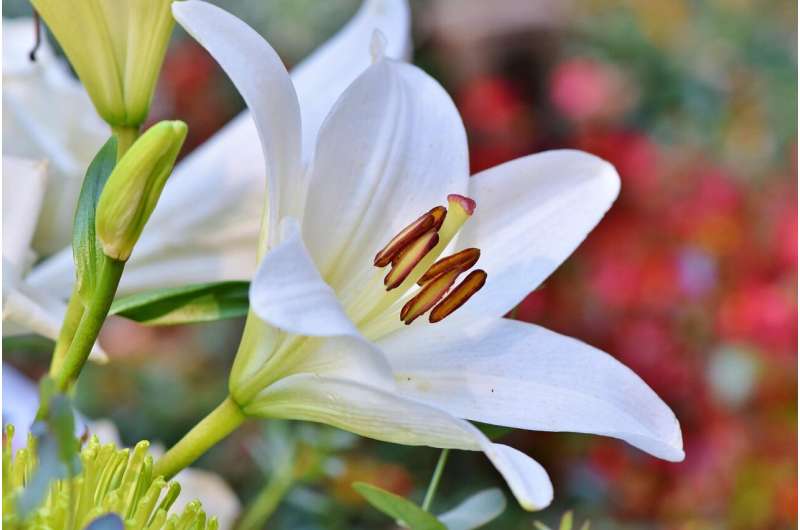

Have you ever thought about when flowers emit their scents?
Using a laser interferometry method, Korea Advanced Institute of Science and Technology (KAIST) mechanical engineers and biological scientists have directly visualized how often a lily releases a floral scent. These measurement results, published in Frontiers in Plant Science, can provide new insights for understanding and further exploring the biosynthesis and emission mechanisms of floral volatiles.
Why is it important to know this? It is well-known that the fragrance of flowers affects their interactions with pollinators, microorganisms, and florivores. For instance, many flowering plants can tune their scent emission rates when pollinators are active for pollination. Petunias and the wild tobacco Nicotiana attenuata emit floral scents at night to attract night-active pollinators. Thus, visualizing scent emissions can help us understand the ecological evolution of plant-pollinator interactions.
Many groups have been trying to develop methods for scent analysis. Mass spectrometry has been one widely used method for investigating the fragrance of flowers. Although mass spectrometry reveals the quality and quantity of floral scents, it is impossible to directly measure the releasing frequency. A laser-based gas detection system and a smartphone-based detection system using chemo-responsive dyes have also been used to measure volatile organic compounds (VOCs) in real-time, but it is still hard to measure the time-dependent emission rate of floral scents.
However, the KAIST research team, co-led by Professor Hyoungsoo Kim from the Department of Mechanical Engineering and Professor Sang-Gyu Kim from the Department of Biological Sciences, measured a refractive index difference between the vapor of the VOCs of lilies and the air to measure the emission frequency. The floral scent vapor was detected and the refractive index of air was 1.0 while that of the major floral scent of a linalool lily was 1.46.
Professor Hyoungsoo Kim said, “We expect this technology to be further applicable to various industrial sectors such as developing it to detect hazardous substances in a space.” The research team also plans to identify the DNA mechanism that controls floral scent secretion.
The delicate water lily: A rose by another name?
Hyoungsoo Kim et al, Real-Time Visualization of Scent Accumulation Reveals the Frequency of Floral Scent Emissions, Frontiers in Plant Science (2022). DOI: 10.3389/fpls.2022.835305
The Korea Advanced Institute of Science and Technology (KAIST)
Citation:
Optical interferometry visualizes how often lilies emit volatile organic compounds (2022, May 30)
retrieved 30 May 2022
from https://phys.org/news/2022-05-optical-interferometry-visualizes-lilies-emit.html
This document is subject to copyright. Apart from any fair dealing for the purpose of private study or research, no
part may be reproduced without the written permission. The content is provided for information purposes only.